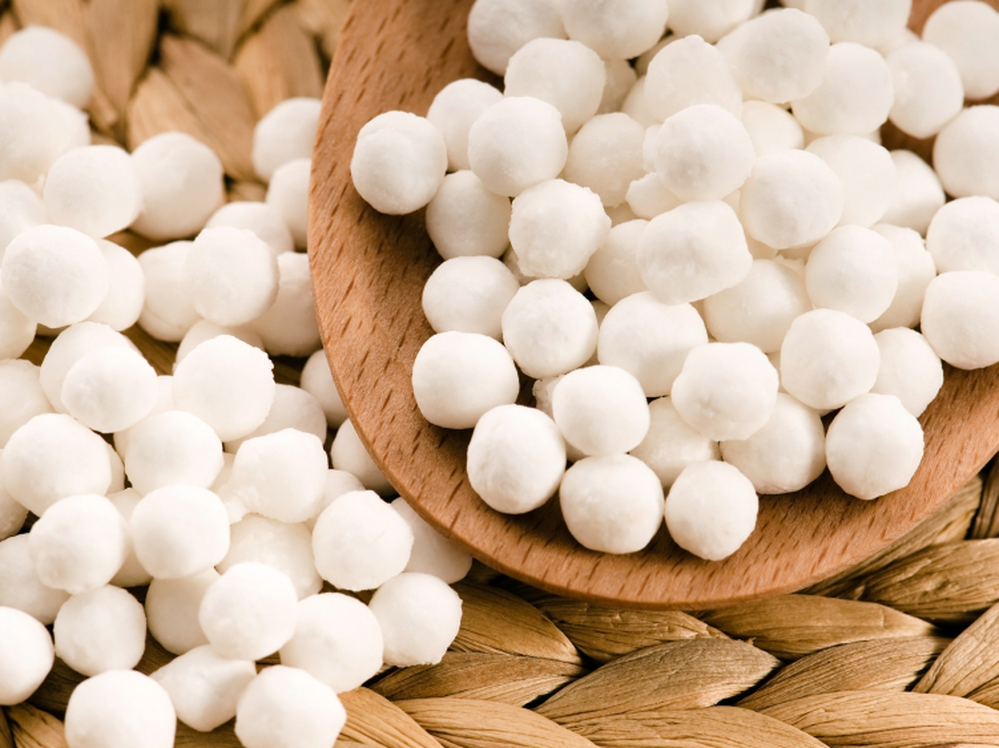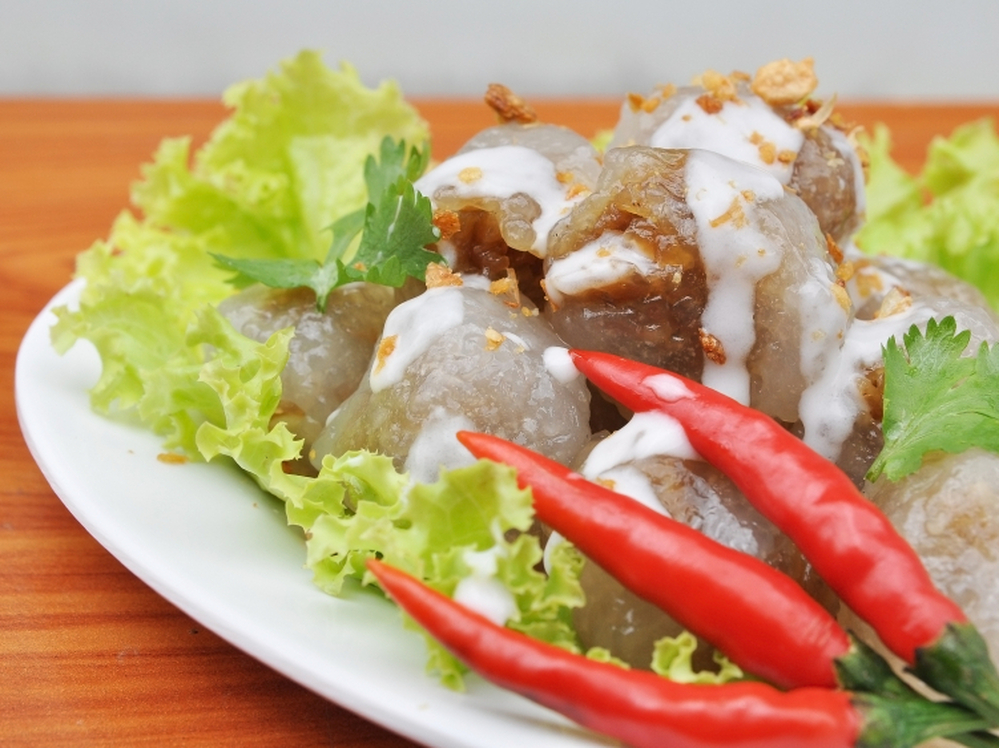 Enlarge image i
Enlarge image i Pearls made from sago starch are common ingredients in Asian desserts and savories.

Pearls made from sago starch are common ingredients in Asian desserts and savories.
Long before rice became the mainstay of Asia, prehistoric people in China turned to sago palm for starch.
Chinese researchers reported this week in the online journal PLOS ONE that they had found traces of sago palm starch on stone implements excavated on the southern coast of China. The tools were used to prepare food about 5,000 years ago (back around when farmers in the region were also growing soy). They speculate that because people in this area had abundant supplies of sago, it took them longer to switch to rice as a staple crop.
That news tidbit from archeologists in China got us to wondering who's eating sago these days. A lot of people, it turns out.
Sago, which is made from the interior of sago palm trees, may no longer be subsistence fare for China, but it's still relied on a a staple source of carbohydrates in some parts of Papua New Guinea.
Sago also gives that gelatinous special something to desserts and savory dishes throughout South Asia.
 Enlarge image i
Enlarge image i Sago wraps pork in this Thai disk, kanom sago.

Sago wraps pork in this Thai disk, kanom sago.
The starch is often processed into pearl-like orbs, and those orbs often end up in soupy desserts, like the Chinese sai mai lo, with taro root and coconut milk. The Malaysian version, which is sweetened with palm sugar, sounds like a much more delicious version of the tapioca pudding I ate as a child.
That's not surprising, since tapioca, which is made from cassava root, and sago are both bland and starchy.
But the two starches will cook up a bit differently, as Australian chef Kurma Dasa reports in his recipe sabudana khichari. There, the sago stands in for grains that are avoided on Hindu fasting days.
Then there are Papuan sweet sago dumplings, which involve mashing the sago with bananas, wrapping the dough in leaves, and boiling them.
Thailand brings us pork dumplings wrapped in translucent sago dough.
And in some areas of Malaysia and Papua New Guinea, people still rely on sago as a source of carbohydrates, preparing it as a fermented paste.
Where can you find sago in the U.S.? Thanks to immigrants who've demanded a taste of home, it is available in many Asian stores. You can also find it for sale in bulk on Amazon.
cook: Definition, Synonyms from Answers.com cook v. , cooked , cooking , cooks . v.tr. To prepare (food) for eating by applying heat. To prepare or treat by heating: slowly cooked the medicinal a stub We would like to show you a description here, but the site youre looking at won't allow us. Malaysian cuisine - Wikipedia, the free encyclopedia Malaysian cuisine is influenced by various cultures from all around the world. Malaysia's population is made up mainly of 3 main ethnics - Malays, Chinese and Indians ... The Food Timeline: popular American decade foods, menus, products ... Need to plan a "decade" food event? This is a very doable project. Once you figure out what you want to accomplish, the rest will fall in place. Grab Your Fork: A Sydney food blog restaurant reviews recipes ... Restaurant reviews, food photos, recipes and cooking from Sydney, Australia and travel around the world. - Pittsburgh Post-Gazette Vokoun stops Islanders cold, Penguins win, 4-0, to take series lead Allegheny County controller to audit agency that handles emergencies at Western Psych Pirates lose ... Can someone please provide me with an example of a well-written ... Best Answer: hmmm... i don't know any good sites, but i can post one of my research papers. i'm a pretty decent writer and i got an a for it, so here you ... Cassava - Wikipedia, the free encyclopedia Cassava (Manihot esculenta), also called manioc, yuca, balinghoy, mogo, mandioca, kamoteng kahoy, and manioc root, a woody shrub of the Euphorbiaceae (spurge family ... Manyaman, Malinamnam, Mabsi,...Yummy Growing up in the province where the space for garden is so wide compared in the city where most people are crowded and there's not much space to build a house much ... Ultralingua Online Language Resources - Dictionary Grammar ... We would like to show you a description here, but the site youre looking at won't allow us.
No comments:
Post a Comment